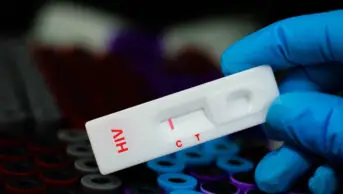Conventional drug delivery systems suffer from the limitations of minimal synchronisation between the required time for therapeutically effective drug plasma concentrations and the actual drug release profile exhibited by the dosage form. This phenomenon has historically necessitated and dictated the administration time and dosage intervals of therapeutic agents.
The research and pharmaceutical industries have and continue to invest in rational dosage form design that allows the required amount of active agent to be made available at the desired time and site of action in the body. Such systems are therapeutically advantageous over conventional systems but are insensitive to changing metabolic states in the body. Mechanisms responding to physiological variations afford synchronisation of drug release with physiological conditions.
Ideally, a drug delivery system should respond to physiological requirements, sense alterations and change drug release accordingly. Most disease states demonstrate a rhythmic pattern in symptoms, hence determining dosage administration and release requirements.
The selective drug release also reduces the burden on the body to manage the side effects that the dosage form may possess. The dosage form consequently needs to be rationally designed for pulsed or self-regulated mechanisms.
The development of oral controlled release drugs represents the crudest example of these optimised systems. The release profiles have been designed to be stimulated or responsive to physiological triggers such as time, pH, osmotic concentration and microbial flora.
It has been acknowledged that, due to inter- and intra-individual variations, in such parameters, uni-responsive systems are limited in providing standardised, reproducible release profiles. In order to address this, advancements have been made to incorporate responsiveness to a number of stimuli, such as dosage forms that exhibit a lag time (eg, chronotherapy), and a sensitivity to pH.1
Further “smart” biomaterials and systems are being investigated to provide more tailored and effective responsive systems that possess finer control of disease states. Due to feasibility in therapeutic applications, product scale-up and cost considerations, internal stimuli-responding systems have gained wider attention than those governed by external stimuli. This article presents just a few examples where applications of responsive systems, whether it is the materials being used or the stimuli that are being exploited, are being investigated and realised.
Hydrogels
Internal stimuli
Hydrogels that are pH-responsive, consisting of polymeric chains with ionic pendant groups, most commonly use polymers based on acrylamide, acrylic acid and their derivatives. In aqueous media of appropriate pH and ionic strength, pendant groups ionise to form fixed charges that lead to the electrostatic repulsive forces that are responsible for the swelling or shrinking of the hydrogel.
Small variations in surrounding pH can result in significant alterations in the mesh size of the polymeric networks and, also considering the physicochemical properties of the active drug, can determine the release profile of an encased active drug.
Insulin delivery is one area that has been explored for application of such a responsive system. The enzymes glucose oxidase and catalase have been immobilised in a pH-responsive hydrogel of hydroxyethyl methacrylate-based co-polymer enclosing a saturated solution of insulin. Diffusion of glucose into the hydrogel at high concentrations leads to an enzyme-catalysed conversion of glucose to gluconic acid with a subsequent pH-lowering effect in the microenvironment of the hydrogel, thereby causing swelling of the hydrogel and release of insulin.
Low glucose concentrations allow contraction of the hydrogel inhibiting release of insulin.1 Further glucose-responsive mechanisms have been incorporated into hydrogels in order to achieve a mechanism that closely mimics the normal physiological glucose-monitoring and insulin-releasing functions of a human pancreas.2
For release of antibiotics at the site and time of infection, polyvinyl alcohol hydrogels loaded with grafted gentamicin have been developed. The antibiotic is chemically attached to the polymer backbone via peptide linkages that can be enzymatically degraded by thrombin.
It has been observed that exudates from the dorsal pouch of rats infected by Pseudomonas aeruginosa displayed significantly higher thrombin-like enzymatic activity towards a specific peptide sequence than exudates from non-infected wounds. Therefore, drug release is accelerated by the presence of infection and can be applied to occlusive wound dressings and infection-prone catheters, drainage bags and prostheses.2
External stimuli
Electric current can be used as an environmental signal to induce responses of hydrogels. Those that are sensitive to electric current are usually made of polyelectrolytes and undergo shrinking or swelling in the presence of an applied electric field. Electro-sensitive hydrogels have been applied in controlled drug delivery.
Chemomechanical shrinking and swelling of poly(methacrylic acid) hydrogels under an electric field have been developed and investigated for the pulsatile delivery of pilocarpine and raffinose. Also microparticles of polyacrylic acid hydrogel have demonstrated rapid and sharp shrinkage with the application of electric current and recover their original size when the electric field is turned off. The electric field-induced alterations in size of the microparticles results in an “on-off” release profile.2
To achieve a combination of triggered drug release and consistent dosing, there has been a development of composite membranes containing both temperature-sensitive polymer nanoparticles (nanogel) and magnetically activated superparamagnetic nanoparticles (
PJ 2013;290:382).
These membranes contain drug reservoirs and allow repeatable, on demand, on-off switching of molecular flux on the application of an oscillating magnetic field.3
Ultrasound has also gained a place as an external stimulus to trigger drug release. It consists of pressure waves of frequencies of 20Hz or more. The waves can be focused, reflected and refracted through a medium, and can be carefully controlled and directed at a tumour site or particular tissue within the body.
The waves cause a compression and expansion of the transmitting medium, and a slight oscillatory displacement. This movement creates a force that physically pushes and stresses cells, but not with sufficient force to disrupt cell membranes unless gas bubbles are present.4
Ultrasound has been coupled with nanovehicles to demonstrate tailored release at specific sites within the body. Microbubbles have exemplified one of the drug delivery systems being investigated. This dosage form comprises elastic and compressible units that have a much lower density than water. They reflect ultrasound and lower the threshold for cavitation, which creates small shock waves that can increase cell permeability.
The resultant effect is destruction of the microbubbles, release of the active drug from within or on the external surface and enhancement of their intracellular uptake. Cavitation is proposed to open micropores in blood vessel walls, making them more passable to molecules and nanovehicles. Therefore, microvascular permeability can be exploited for increasing local delivery of therapeutics.5
Tumour-specific stimuli
Extracellular microenvironments (eg, pH, temperature, dissolved oxygen concentration, enzymes, etc) can be greatly affected by disease progression. Tumours, for example, are a region that is more acidic (approximately pH 6.5) than blood (approximately pH 7.4) due to the anaerobic production of lactic acid and adenonsine triphosphate hydrolysis in an energy-deficient environment.
A non-viral gene delivery nanoparticulate system consisting of DNA, polyethylenimine (PEI) and poly(methacryloyl sulfademethoxine) (PSD)-block-PEG demonstrated high transfection and cytotoxicity at pH 6.6 when the PSD-block-PEG becomes detached and there is direct interaction of PEI with the cells. At pH 7.4, the nanoparticles had low transfection (the process of deliberately introducing nucleic acids into cells) due to shielding of the PEI by the PSD-block-PEG.
The hyperthermic conditions found at a tumour site have also been exploited with the use of thermo-responsive co-polymers that are tuneable between 37 and 42C.
Condensed DNA form small, neutrally charged polyplexes which aggregate and result in a two-fold increase in transfection efficiency when the temperature is increased from 37 to 42C. Upon intravenous administration in mice, these thermo-responsive polyplexes accumulated in the hyperthermic region of the neoblastoma, subsequently resulting in increased DNA transfection in vivo.6
Enzyme responsiveness
Hydrolases, including proteases, lipases and glycosidases, are the most widely used enzymes for drug delivery probably due to the ease of attachment of bioactive moieties to nanovehicles via enzyme-cleavable units.
The principle is that, at the target site, where these enzymes are concentrated or localised, there is selective release of the loaded drug to result in targeted delivery. Phospholipases have recently gained much interest as therapeutic targets since they are known to be up-regulated in infectious and inflammatory diseases, and sometimes present in high concentrations in the tumour site.
Oxireductase is another identified enzyme that plays a central role in oxidative stress associated with Alzheimer’s disease and cancer. Nanocarriers modified with cleavable units vulnerable to particular enzymatic activity are being investigated for the treatment of these conditions.7
It is well acknowledged that PEGylation of nanoparticulate vehicles extends residence in blood circulation, reduces aggregation with serum proteins and lowers toxicity, as was mentioned in the first article in the nanotechnology series (
PJ 2013;290:115).
However, the PEGylation can interfere with cellular uptake and endosomal escape due to steric hindrance and thereby adversely affects transfection. In overcoming this challenge employing reversible PEGylation has been explored.
Extracellular enzyme-triggered dePEGylation has been investigated to achieve efficient gene delivery by overcoming poor adhesion to the cell surface and entry. A multifunctional envelope-type nanodevice (MEND) consisting of a lipid linked via matrix metalloproteinase (MMP)-cleavable peptide was developed for delivery of small interfering RNA (siRNA).
Also, pH-sensitive fusogenic GALA peptide was integrated into the MEND to enhance endosomal escape resulting in an MMP-dePEGylable, fusogenic MEND that demonstrates effectively improved siRNA delivery both in vitro and in vivo.6
Conclusion
The breadth of materials being investigated and the diversity of stimuli exploited to trigger release are extensive in research and development at the moment.
The main aim for the pharmaceutical industry is to ensure that the characteristics of the dosage form material, triggering stimulus and disease specific environment are all considered and accounted for in the design and engineering stages.These parameters need to be focused and work in harmony with one another so as to achieve the most effective disease-specific, controlled drug release that allows the best targeted therapeutic effect.
References
1 Gupta P, Vermani K, Garg S. Hydrogels: from controlled release to pH-responsive drug delivery. Drug Discovery Today 2002;7:569–79.
2 Qiu Y, Park K. Environment-sensitive hydrogels for drug delivery. Advanced Drug Delivery Reviews 2001;53:321–39.
3 Hoare T, Timko BP, Santamaria J et al. Magnetically triggered nanocomposite membranes: a versatile platform for triggered drug release. Nano Letters 2011;11:1395–1400.
4 Husseini GA, Pitt WG. Micelles and nanoparticles for ultrasonic drug and gene delivery. Advanced Drug Delivery Reviews 2008;60:1137–52.
5 Mayer CR, Bekeredijan R. Ultrasonic gene and drug delivery to the cardiovascular system. Advanced Drug Delivery Reviews 2008;60:1177–92.
6 Shim MS, Kwon YJ. Stimuli-responsive polymers and nanomaterials for gene delivery and imaging applications. Advanced Drug Delivery Reviews 2012;64:1046–59.
7 De la Rica R, Aili D, Stevens M. Enzyme-responsive nanoparticles for drug release and diagnostics. Advanced Drug Delivery Reviews 2012;64:967–78.

